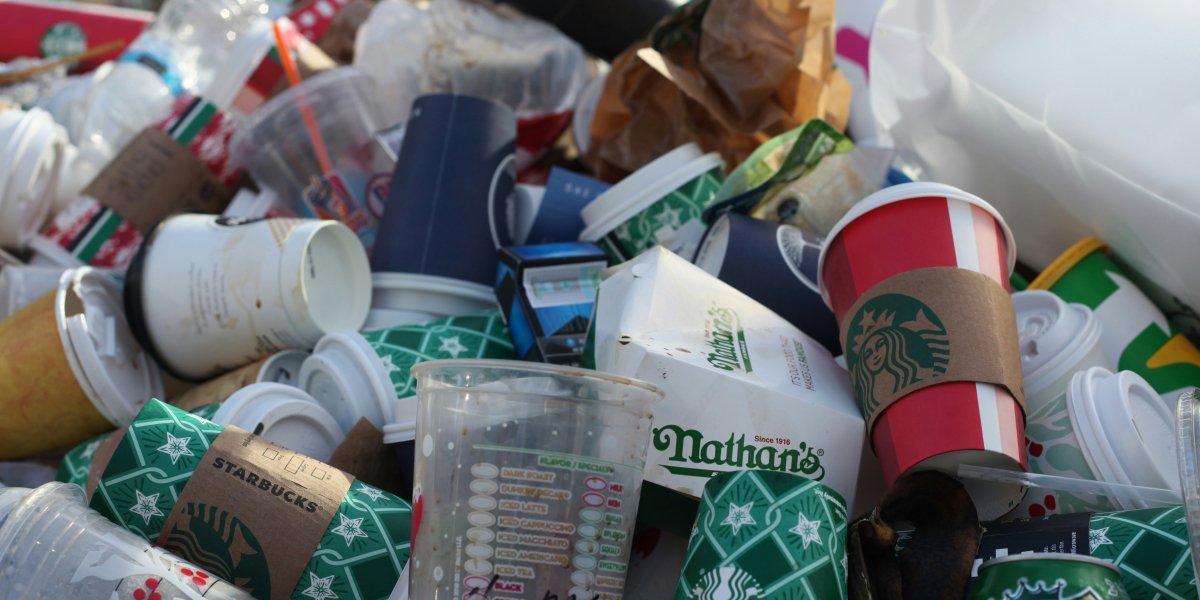
This post is from Smart Prosperity Institute's Circular Economy Guest Blog Series. To learn more about the circular economy in Canada, check out our new Policy Brief. Interested in contributing to this series? Click here to learn more.
January 24, 2018
Guest Post By Sally McIntyre
If a circular economy is one where we maximize value and eliminate waste, one might think Canada is doing well. After all, Canadians have been using municipal recycling programs as their hallmark contribution to environmental protection for decades. “I recycle everything” is said with pride. However, everything is not recyclable, and much that enters the blue box, green bin, and Good Samaritan box is plain old-fashioned garbage. The recent ban imposed by China on imports of Canadian and other foreign shipments of so-called recyclables is stark proof.
The gig is up
While a lot has been said over the years regarding depressed glass markets, the public is relatively unaware about the amount of plastic and other materials lacking cost-effective recycling processes and market outlets. For every non-recyclable item placed in the blue box, there is a person or piece of equipment somewhere along the recycling process trying to pull it out. Left unextracted these wastes reduce the marketability of a load, can cause it to be dumped, or relegate it to use as a fuel source--often in countries with less restrictive air quality controls or enforcement.
Toronto recently acknowledged that over 25% of material collected through its recycling programs is garbage. It is this excessive residual waste in shipments of recyclables that China is telling Canada and the rest of the world to manage in our own backyards. How much are they willing to accept? In some cases, as little as 0.5%--effectively zero.
Recycling plants are designed to sort and bundle recyclables to predetermined standards. Given that higher contamination rates have been the norm, Canadian plants that shipped to China will be unable to meet the new importation standards without considerable investment in people or equipment. Even processors that don’t ship to China are expected to feel the impact of the ban. A surplus of recyclables is depressing prices, which will undermine programs and service contracts across Canada.
Pulling up our recycled socks
While entrepreneurs around the world are no doubt looking to capitalize on China’s ban, this development provides regulators, municipalities, non-profits, waste contractors, and product stewards an opportunity to examine current practices and improve Canada’s products and programs. As consumers, all of us need to stop the mindless tossing of everything plastic, every scrap of discarded clothing, every piece of wood into a designated bin and feel like our job is done. Far from it.
Opportunity 1 – Design in Quality Control
Some municipalities allow a broad range of materials in the recycling bin knowing that only a fraction will be recycled. This is done to ease participation and capture a high volume of targeted recyclables. The unintended consequence, however, is the public’s misconception that almost everything is recyclable. Why care if the meat I buy is packaged with styrene if I think it’s recyclable? (For the record it is…at uneconomical prices in most Canadian jurisdictions.) We need programs that capture what is recyclable; and force the hard conversations around the rest.
Opportunity 2 – Educate Consumers
We need to remind ourselves about the source and complexity of the products we handle every day. Sophisticated systems are needed to take the variety of plastics we generate and extract the useful, remove contaminating films, and reconstitute them into something someone is willing to buy. The best communication programs inform residents not only what to put into the recycling bin, but also what to leave out, and why. If someone knows that a metal hanger in a bin can destroy equipment at the recycling plant, they’ll think twice about placing it in the blue box. If they know there is no market for plastic film bags, they may be more inclined to switch to cloth bags.
Opportunity 3 – Manage for life
Regulators and product manufacturers and suppliers (aka product stewards) have a responsibility to consider and design for the lifecycle management of goods. Just because a product is economical to produce does not make it suitable for repeated use, or technically possible and affordable to recycle. Simply put, regulators and stewards need to focus on helping us move to a circular economy. We should not be manufacturing and importing consumer goods where the only feasible destination is a landfill or incinerator. For example, Canada should work with the European Union and others to develop international content standards regarding priority wastes such as plastics. A circular economy requires agreement on the inputs to product manufacturing in order to allow for their cost-effective extraction and reuse at end of life.
Opportunity 4 – Innovate
If necessity is the mother of invention, Canada’s recycling sector just received a large shot of motivation. However, to transition to a circular economy, work is needed at the design and manufacturing end of the life cycle. There is ample opportunity for Canada to develop materials, products, and technologies that improve packaging and consumer good durability, reusability, and recyclability. Shining the clean tech funding lens on materials development and processing could help accelerate our transition to a circular economy.
Let’s view the closing of the Chinese border not as a waste management crisis, but rather as the catalyst to a circular economy and much needed changes in policies, programs and innovation here at home.
Sally McIntyre, RPP is an environmental planner with over 30 years governmental and corporate experience. Sally provides planning, management and communications services in the fields of solid waste management, drinking water and sanitation, drainage, and climate change. Sally can be reached at McIntyreSolutions.ca.
Image: Stockpiled waste plastic, Halifax Material Recovery Facility (Mary-Catherine McIntosh/CBC)